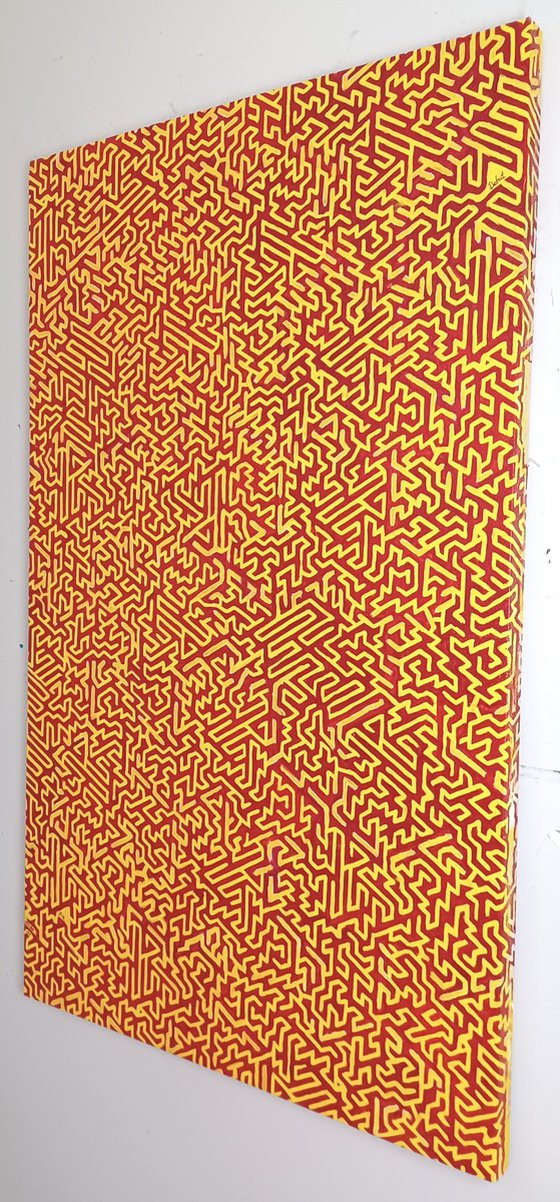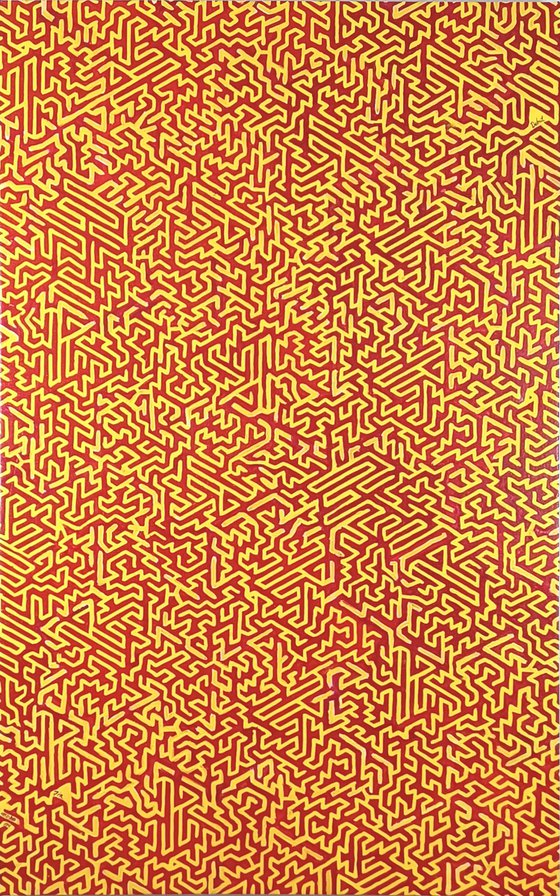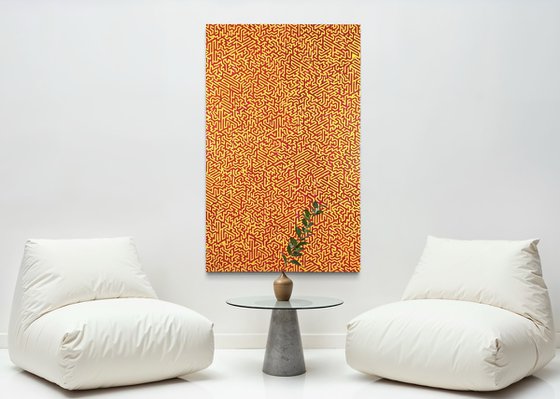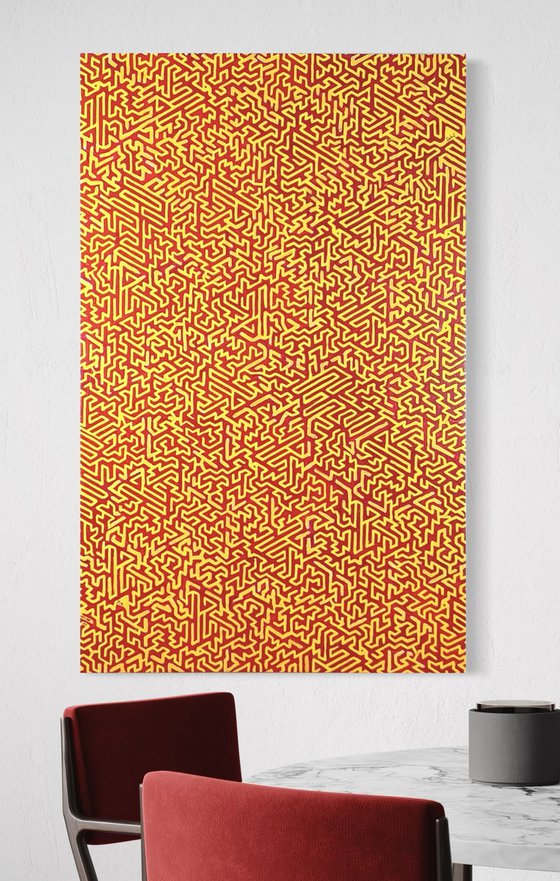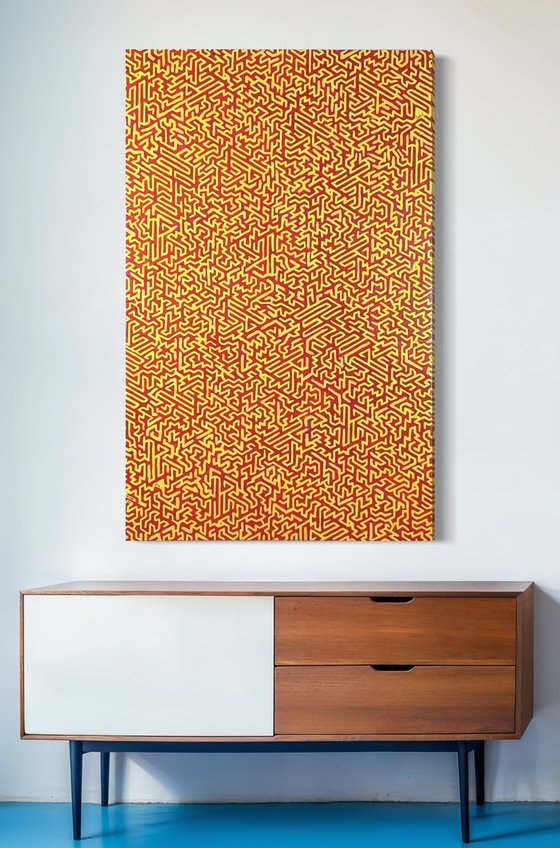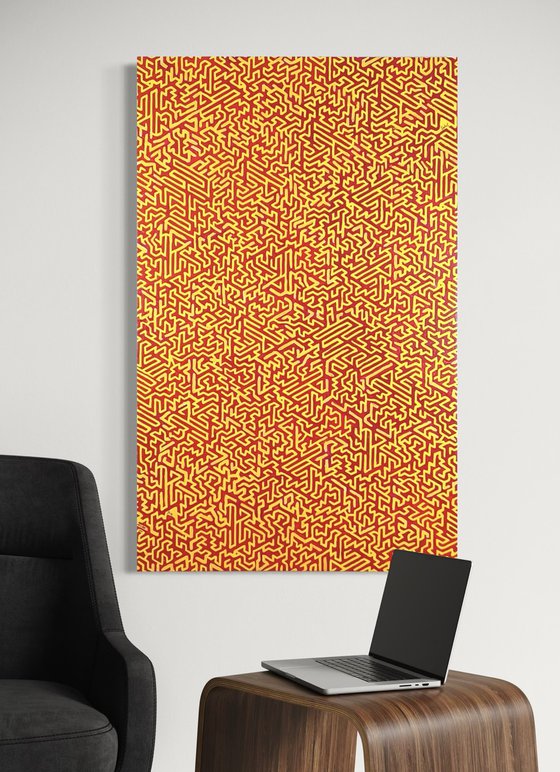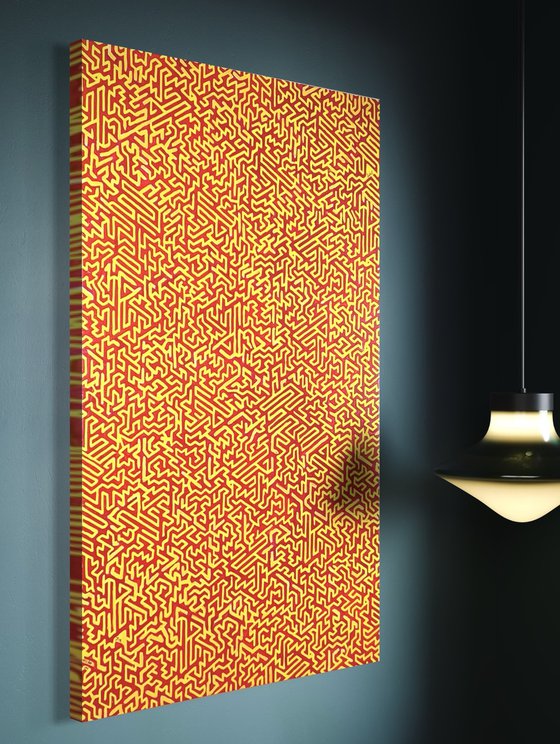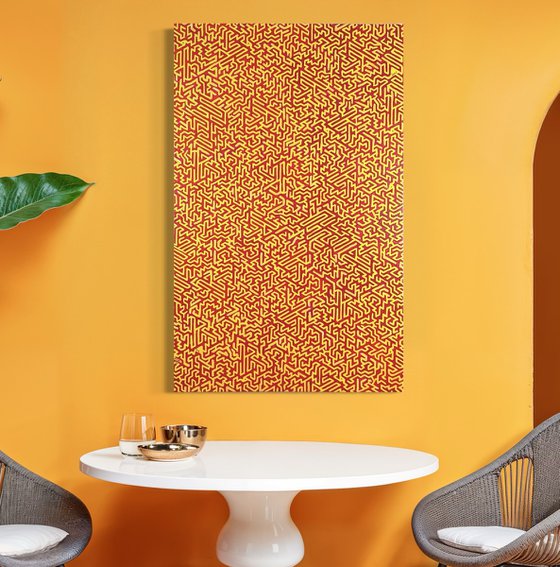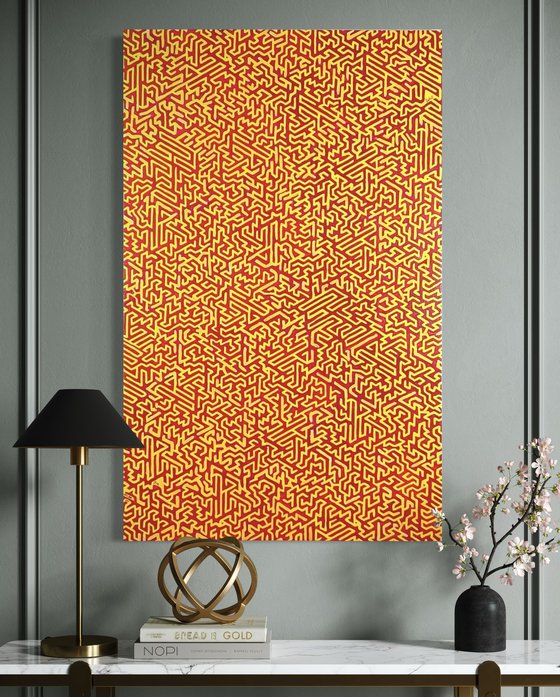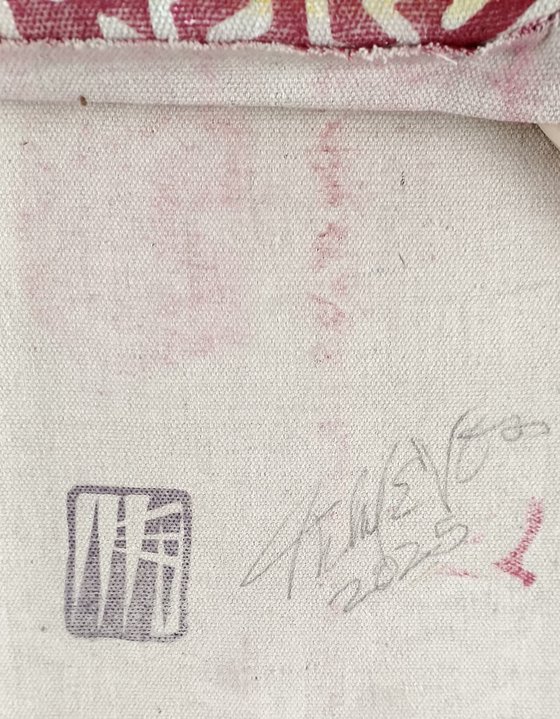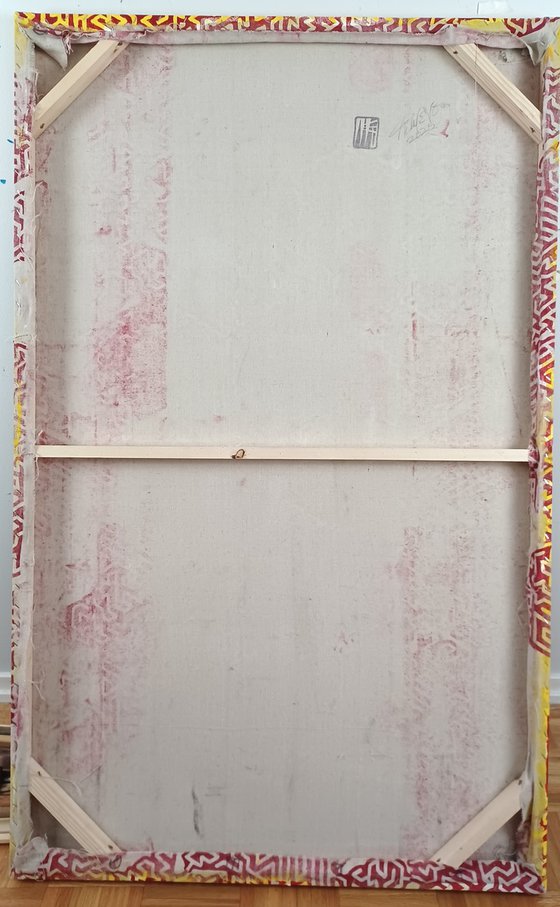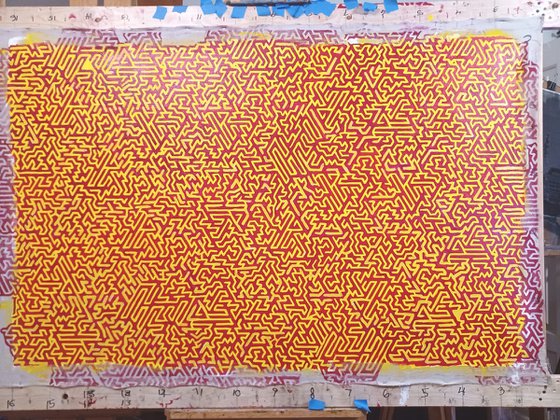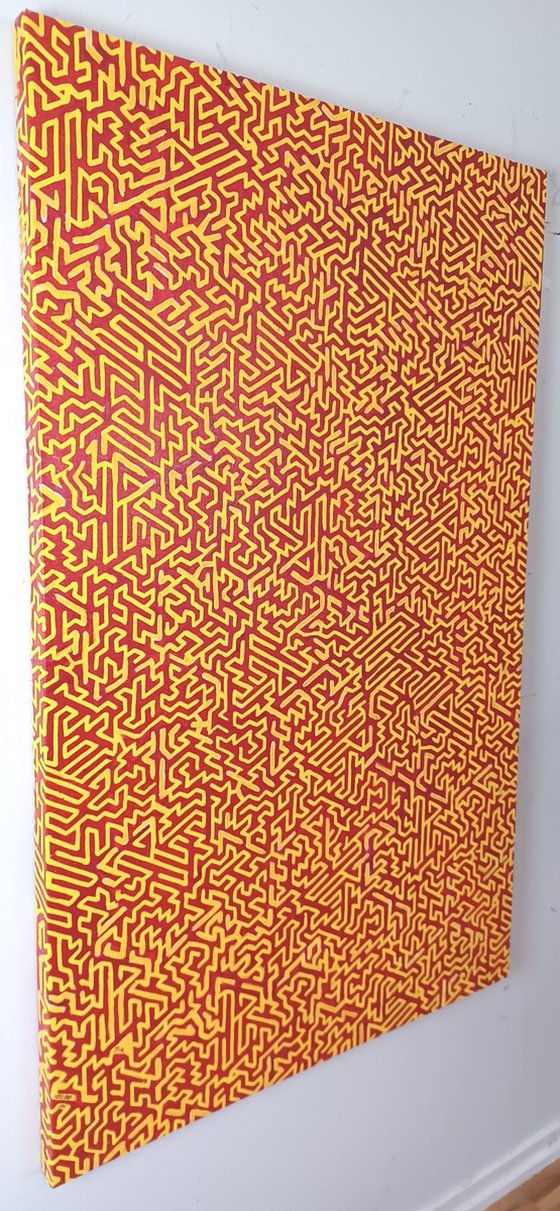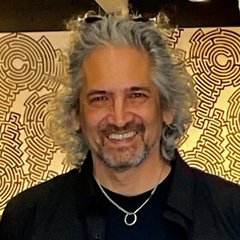Main Navigation
Artwork description:
A large-format exploration of the intersecting and concentric lines that make up a maze.
Einstein tiles are a recently-discovered geometric shape, resembling a hat, that can perfectly cover an infinite plane without ever creating a repeating pattern.
"Einstein" does not refer to the physicist, but instead derives from the German "ein stein" (one stone).
This tile, discovered by math hobbyist David Smith in 2022, resolves a decades-long mathematical search for a single shape which can tile aperiodically (without repeating).
Tessellation is a mathematical art form that involves covering a surface with geometric shapes, tiles or plates to create a pattern without any overlap or spaces between them.
The pattern is created by rotating, translating (sliding), and/or reflecting (mirroring) the plates onto a triangular 30-, 60- and 90-degree grid. Each linoleum plate in the Labyrinth series has been cut to these gridlines no matter the plate orientation.
Materials used:
oil and canvas on stretchers
Labyrinth #13 (2025) Linocut
by Michael E. Voss
£1,674.39
- Linocut on Canvas
- From a limited edition of 1
- Size: 83.82 x 134.62 x 4.45cm / 83.82 x 134.62cm (actual image size)
- Ready to hang
- Signed and numbered on the back
- Style: Geometric
- Subject: Abstract and non-figurative
- Hurry only 1 left in stock
Loading
Artwork description
A large-format exploration of the intersecting and concentric lines that make up a maze.
Einstein tiles are a recently-discovered geometric shape, resembling a hat, that can perfectly cover an infinite plane without ever creating a repeating pattern.
"Einstein" does not refer to the physicist, but instead derives from the German "ein stein" (one stone).
This tile, discovered by math hobbyist David Smith in 2022, resolves a decades-long mathematical search for a single shape which can tile aperiodically (without repeating).
Tessellation is a mathematical art form that involves covering a surface with geometric shapes, tiles or plates to create a pattern without any overlap or spaces between them.
The pattern is created by rotating, translating (sliding), and/or reflecting (mirroring) the plates onto a triangular 30-, 60- and 90-degree grid. Each linoleum plate in the Labyrinth series has been cut to these gridlines no matter the plate orientation.
Materials used:
oil and canvas on stretchers
14 day money back guaranteeLearn more
